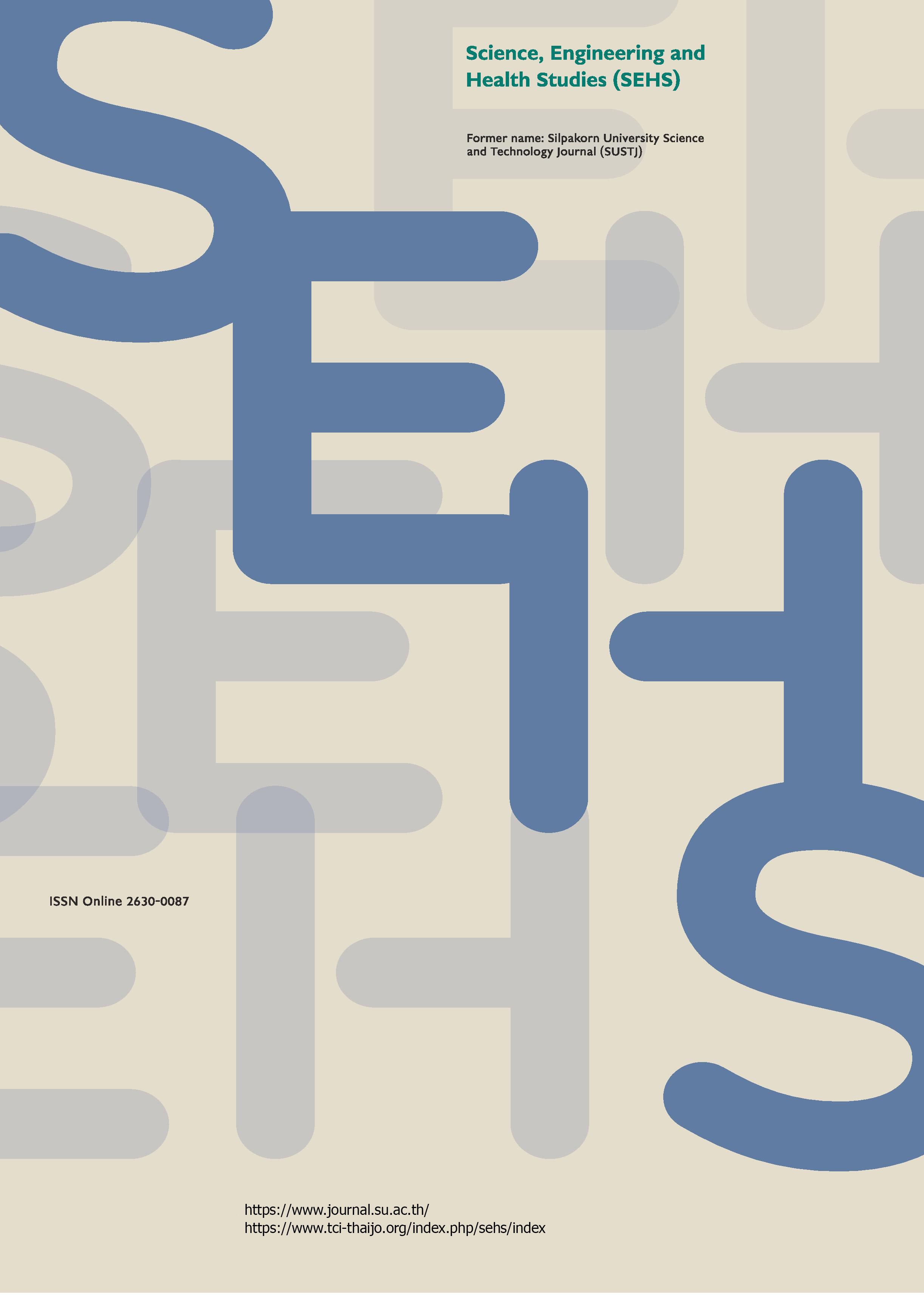Efficacy and application study of lipid stain by chromic acid techniques for determining the cause of death from a fat embolism
Main Article Content
Abstract
Fat embolism is a common cause of death after trauma or non-traumatic cases as fat droplets may block blood vessels. It can be identified during autopsy through the microscopic examination of the lungs using Oil Red O (ORO) conducted on frozen tissue, including formalin-fixed tissue. Fat can also be identified using the chromic acid technique. Consequently, in order to increase forensic pathologists' confidence and reduce the cost of delivering ORO stains to other units, the researcher aimed to compare the effectiveness of commercial ORO (ORO-C) and homemade ORO (ORO-HM) in the chromic acid technique for steatosis tissue. We separated the samples into two groups: one stained with ORO-C stain sets and the other with ORO-HM stains. Three experts evaluated the effectiveness of chromic acid stained tissue for both types of ORO using a blind test method. The results were then compared using the SPSS program. The results showed that chromic-ORO-HM of liver had quality and efficiency in interpreting the steatosis detection, similar to the chromic-ORO-C stain sets. Histopathology findings found that fat was paler than chromic-ORO-C stain sets but showed better staining on the background. In addition, chromic acid was able to preserve fat tissue and identify fat-positive results in three victims, who died from fat emboli, suggesting it potential application in forensic medicine.
Downloads
Article Details

This work is licensed under a Creative Commons Attribution-NonCommercial-NoDerivatives 4.0 International License.
References
Arregui, M., Fernández, A., Paz-Sánchez, Y., Santana, Á., Sacchini, S., Sierra, E., Arbelo, M., and de Quirós, Y. B. (2020). Comparison of three histological techniques for fat emboli detection in lung Cetacean’s tissue. International Journal of Scientific Reports, 10(1), 8251.
Bell, P. (2020). Normal Liver Histology 101. [Online URL: https://liverfellow.org/post/normal-liver-histology-101] accessed on August 13, 2021.
Bumbrah, G. S., Sodhi, G. S., and Kaur, J. (2019). Oil Red O (ORO) reagent for detection of latent fingermarks: A review. Egyptian Journal of Forensic Science, 9, 3.
Cai, C. (2021). Definition of Oil Red O. [Online URL: https://www.pathologyoutlines.com/topic/stainsoilredo.html] accessed on March 21, 2021.
Chromic acid. (2023). In Wikipedia. [Online URL: https://en.wikipedia.org/wiki/Chromic_acid] accessed on February 20, 2023.
Deliliga, A., Chatzinikolaou, F., Koutsoukis, D., Chrysovergis, I., and Voultsos, V. (2019). Cardiopulmonary resuscitation (CPR) complications encountered in forensic autopsy cases. BMC Emergency Medicine, 19(1), 23.
Fine, K. D., and Ogunji, F. (2000). A New method of quantitative fecal fat microscopy and its correlation with chemically measured fecal fat output. American Journal of Clinical Pathology, 113, 528–534.
Lipid-laden alveolar macrophage. (2020). In Wikipedia. [Online URL: https://en.wikipedia.org/wiki/Lipid-laden_alveolar_macrophage] accessed on August 11, 2022.
Milroy, C. M., and Parai, J. L. (2019). Fat embolism, fat embolism syndrome and the autopsy. Academic Forensic Pathology, 9(3–4), 136–154.
Oil Red O. (2022). In Wikipedia. [Online URL: https://en.wikipedia.org/w/index.php?title=Oil_Red_O&oldid] accessed on September 6, 2022.
Parai, J. L., and Milroy, C. M. (2018). The Utility and scope of forensic histopathology. Academic Forensic Pathology, 8(3), 426–451.
Quan, M. A., Hoerger, J. L., Mullins, E. H., and Kuhn, B. T. (2022). A 66-year-old man with subacute cough and worsening dyspnea previously diagnosed with COVID-19 pneumonia. Journal of Investigative Medicine High Impact Case Reports, 10, 232470962110553.
Riva, G., Villanova, M., Cimal, L., Ghimenton, C., Bronzoni, C., Colombari, R., Crestani, M., Sina, S., Brunelli, M., D’Errico, A., Montin, U., Novelli, L., and Eccher, A. (2018). Oil Red O is a useful tool to assess donor liver steatosis on frozen sections during transplantation. Transplantation Proceedings, 50(10), 3539–3543.
Samdanci, E. T., Çelik, M. R., Pehlivan, S., Celbis, O., Turkkan, D., Kara, D. O., and Pamukcu, E. (2019). Histopathological evaluation of autopsy cases with isolated pulmonary fat embolism (IPFE): Is cardiopulmonary resuscitation a man cause of death in IPFE? Open Access Emergency Medicine, 11, 121–127.
Thairath Online. (2020). Relatives are Fascinated by a Woman Who Died as a Result of Breast Augmentation Liposuction. [Online URL: https://www.thairath.co.th/news/crime/1921503] accessed on December 10, 2020.
Tracy, R. E., and Walia, P. (2004). Lipid fixation for fat staining in paraffin sections applied to lesions of atherosclerosis. Virchows Archiv, 445(1), 22–26.
Voisard, M. X., Schweitzer, W., and Jackowski, C. (2013). Pulmonary fat embolism--A prospective study within the forensic autopsy collective of the Republic of Iceland. Journal of Forensic Science, 58(S1), 105–111.
Wang, F.-Y., and Ching, T.-T. (2021). Oil Red O staining for lipid content in Caenorhabditis elegans. Bio-protocol Journal, 11(16), e4124.


